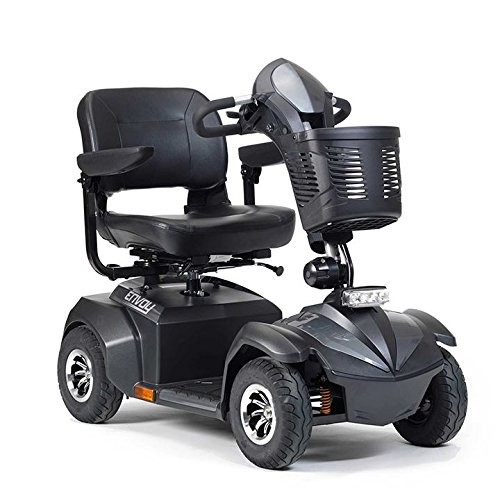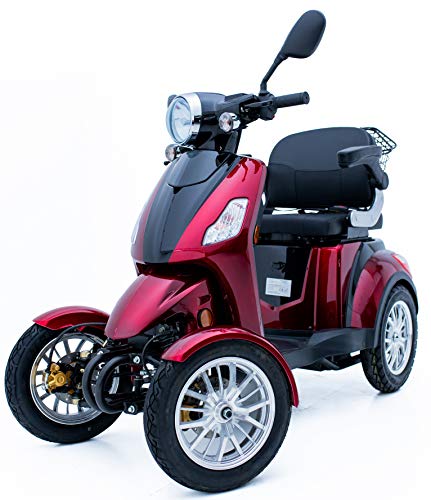Are Mobility Scooters Allowed On Pavements Tools To Help You Manage Yo…
페이지 정보
작성자 May Hash 작성일24-05-26 04:29 조회2회 댓글0건본문
 Mobility Scooter Laws - Are Mobility Scooters Allowed on Pavement Surfaces?
Mobility Scooter Laws - Are Mobility Scooters Allowed on Pavement Surfaces?Many mobility scooter users worry that they are violating rules and causing disturbances to pedestrians. This is especially the case when scooters are being used on pavements.
These scooters are not vehicles and they should only be driven in designated pedestrian zones including sidewalks, are mobility scooters allowed on pavements pathways and pathways. In addition, the user must follow the applicable rules to ensure their safety and comply with local laws.
Class 2
When you are using a mobility scooter on roads there are many things to think about. Included in this are the type of mobility scooter you have as well as local laws and regulations and safety concerns. In addition, it is essential to be aware of the various kinds of mobility scooters and what they can and cannot do. You can then choose the scooter that best suits your needs, while remaining within the law.
Class 2 scooters are a type of lightweight, compact mobility scooter designed for use on pavements and footpaths. They typically have the maximum speed of 4mph scooter and are not suitable for use on roads. These scooters are usually smaller in dimensions and weigh less than their counterparts, which makes them easier to transport and store. These scooters also come with basic controls and can access pedestrian and zebra crosswalks.
Class 2 scooters have to have a maximum weight of 150kg unladen (or 200kg if they are carrying user equipment). They also need a front and rear light for visibility. They are not required to be registered with the DVLA and do not have to pay a vehicle tax.
The pavements in the UK are a vital part of the infrastructure of the country However, they should be used with caution. Mobility scooters are able to be used on pavements so long as they don't exceed the speed limit of 4mph or block pedestrians. They should be cautious about riding on cycle paths that are designated "Cycle Only" and should not interfere with public buildings, including supermarkets and shops.
The same way, class 3 scooters can be driven on roads, however they shouldn't be driven in cycle or bus lanes. They are usually more powerful than class 2 scooters and are able to be driven at speeds of up to 8 mph. They are also more likely to be fitted with features for road use like indicators and lights.
It is essential to follow the rules governing the mobility scooters, whether you are driving a Class 2 or a Class 3 scooter. Make sure to keep a safe distance from other vehicles and take caution when turning. Be aware of pedestrians and keep an eye out for older and children who may not be able to see you. It is recommended to check regularly the batteries and tires on your scooter to ensure that they're in good working order.
Class 3
As a rule, mobility scooters of class 3 are only permitted on sidewalks and pedestrian areas. They are permitted to be used on roads provided they have an amber flashing light and if the speed limit is not more than 50mph. It is not recommended to use dual carriageways and to avoid driving in bus lane.
The rules and regulations applicable to scooters vary throughout the UK. It is vital to be aware of these regulations in order to maintain your safety and that of others. It is important to know the various types of scooters that are available so that you can pick one that is best suited to your needs.
You can only ride a motorized scooter on a sidewalk or in other areas for pedestrians in the event that you are physically impaired or have an illness that makes walking hard. You must also be able to operate the controls of your scooter and are mobility scooters allowed on pavements have full vision in both eyes. If you're unsure of your ability to operate a mobility scooter, you could visit a local shop and test out different models.
Moreover mobility scooters must be able to yield the right of way to pedestrians. You might find that your scooter gets stuck in the path of other people or even could cause a collision if you aren't careful. To avoid this, you should always keep your scooter a safe distance away from other pedestrians.
Also, you should ensure that your scooter is outfitted with the necessary safety features. These include reflective lights, functional lights, and other safety equipment. These will make you visible to other pedestrians, especially when traveling in poorly-lit locations or at nighttime. Also, you should avoid using headphones or mobile phones while driving, as these can distract you and cause accidents.
You must park your scooter in a specific area. These rules are different for rural and urban areas. If you live in a city area, check with the homeowner's association for the rules. Many communities have a minimum time limit for parking scooters. Some communities may have specific rules about the types of scooters that are mobility scooters Allowed on pavements - Www.chunwun.com - allowed to use.
Road legal
For many older adults with limited mobility A scooter is an absolute lifesaver. It lets them live an active lifestyle and avoid the need to move into a nursing home. Many people depend on their scooters as their main mode of transport, making errands or shopping for groceries around their area. There are a few rules to be followed when using a motorized scooter. These include yielding right of way to pedestrians, adhering to traffic laws and following local guidelines for sidewalk usage.
Most municipal laws for motorized scooters resemble those that apply to other vehicles. For instance, the majority of towns and cities limit scooter speeds to 4mph or less when driving on pedestrian walkways or sidewalks. They also require drivers to yield to pedestrians and exercise caution when crossing roads and driveways. Safety flags and reflective clothing are good ideas, especially when you're riding a scooter in low-light conditions or at night.
It is not required to register or insure mobility scooters, but they should be maintained regularly to ensure their safety. A trained technician in routine maintenance should perform it, including a complete inspection and replacement of worn components. They should also offer guidance on how to park and store your scooter. A scooter that is parked in an inappropriate location could become dangerous for pedestrians, and it could cause damage to your vehicle.
It's important to note that class 2 and class 3 scooters aren't road legal. They are only permitted to cross roads using pavements and footpaths. They are not designed to handle the speed and traffic of a road.
In certain instances, a qualified professional may suggest that a user of a scooter attends a road safety course. These courses are usually offered by independent organizations or insurance companies and provide a brief overview of the laws, regulations, and rules concerning the use of mobility scooters in public spaces. These courses will allow you to feel confident about your ability to safely navigate busy sidewalks and streets, as well as operate your scooter.
Legality
Mobility scooters can be great way to increase your mobility and independence. However, many are concerned about the places they can use their scooters legally. Some cities have banned them, whereas others allow them with certain limitations. Although there are no universal laws governing scooters, there are basic guidelines that can assist you in staying legal and safe when operating your scooter.
Before you take your scooter out be familiar with the local traffic laws in your area and consult your local transportation department. These guidelines could include requirements for the scooter's design as well as safety features and maximum speed limits. Maintaining your scooter regularly is crucial to ensure it is in good condition.
You can use your scooter on bike lanes, sidewalks, and roads if it's road legal and meets all the required specifications. But, don't use it on bus or motorway lanes, as this can be hazardous for you and other road users. If you do decide to ride your scooter out on the roads, make sure it has all the necessary indicators and lights so that other road users can be able to clearly see it.
Making sure you are safe is the most important thing. This will help you avoid injuries and accidents, and it will also keep you healthy and confident. It's recommended to plan your trips in advance so that you can locate an accessible parking space. If you're not sure about the parking regulations, consult the transportation department in your city or local advocacy groups to find out more.
You should always drive slowly on the pavement mobility scooters uk and give way to pedestrians. Also, be aware of any obstacles or dangers that may be present on the sidewalk. Wear a helmet and other protective gear when riding your scooter on the road or sidewalk.
Exercise regularly to improve your coordination and balance. This will ensure your safety on your scooter and could prevent accidents. It is also important to adhere to the recommendations of your doctor regarding physical activity.

댓글목록
등록된 댓글이 없습니다.



